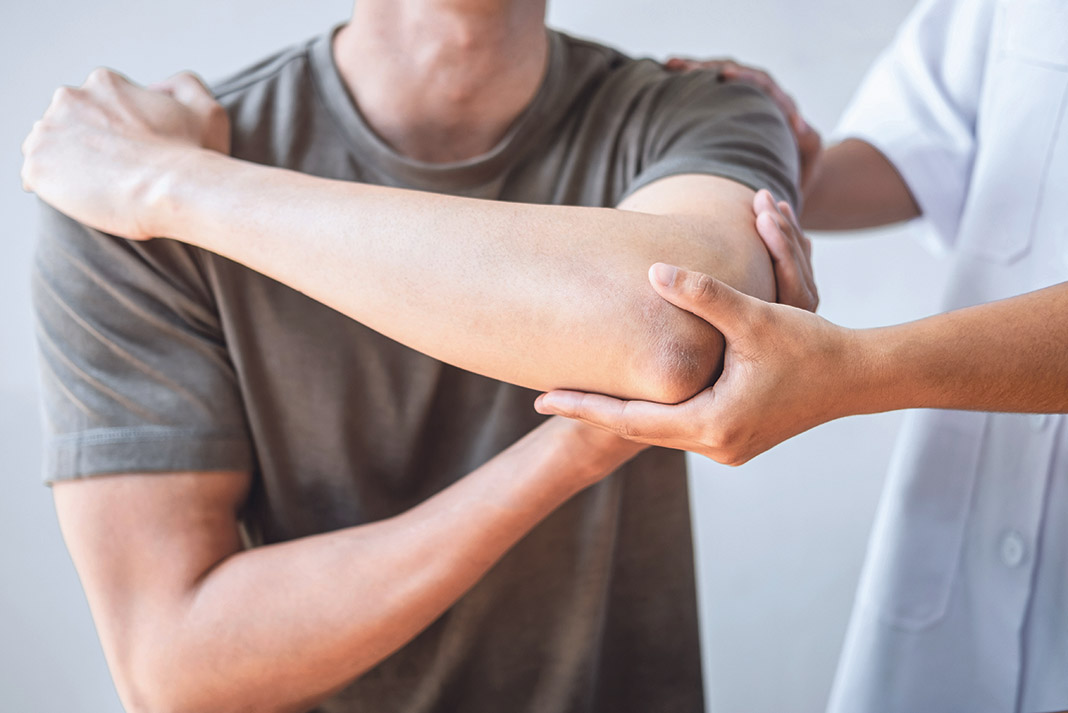health and wellbeing
Taking care of your joints
words by
lee teusner // go vita tanunda
10 SIGNS YOU NEED TO TAKE CARE OF YOUR JOINTS AND WHAT YOU CAN DO ABOUT IT
It’s easy to take your joint health for granted in your younger years, but as we get older, most of us become increasingly aware of how precious our mobility is.
Osteoarthritis is the most prevalent age-related joint problem, affecting around one in five women and one in 10 men over 60 years old.
It typically develops over an extended period – some experts estimate at least 10 to 20 years.
Luckily, there are a number of strategies you can adopt now to help maintain your existing joint health and/or manage your osteoarthritis symptoms, which may be particularly beneficial if you’re affected by any of the following 10 issues:

The signs to look out for...
You’re experiencing joint pain: you may feel your knees complaining when you’re carrying a heavy load or walking up or down stairs. You might also find that your joints ache for a while after you’ve used them.
Your joints are tender to touch: Do one or more of your joints feel sore and tender when you press down on them? This may be an indication that swelling, and inflammation are present.
It takes you a while to get moving: Osteoarthritic joints tend to tighten during periods of rest and regain their mobility after a little movement.
Your joints click, crack or grate when you move them: These sensations in the joints are called crepitus, and when they occur frequently, may indicate that joint damage is present.
Your joints aren’t very flexible: A reduced range of motion is a common feature of arthritic joints, and over time, may impede your ability to perform certain tasks or retain your balance.
You’re overweight: Being overweight strongly increases your risk of developing osteoarthritis.
Your work has had an impact on your joints: People who’ve worked in jobs that subject their joints to repetitive heavy loads have an increased risk of osteoarthritis.
You’ve participated in high impact exercise: Football, running and netball are all renowned for the heavy load they place on the joints. Unfortunately, these high impact sports increase your likelihood of developing joint issues.
You have a history of joint injury: Past joint traumas may increase the subsequent likelihood of osteoarthritis developing.
Your parents had joint problems: If your parents had osteoarthritis significant enough for them to need joint replacement surgery, it’s possible you may develop osteoarthritis too.
Looking after your joints
If one or more of the 10 warning signs above apply to you, here are some simple steps you can take to look after your joints:
Lose weight if necessary: Every kilogram of excess weight you shed, reduces the working load on your knees equivalent to four kilos. Losing just 5% of your body weight may be enough to start relieving symptoms of joint pain but losing 10% could have even more significant benefits.
Be active: The more active you are now, the happier your joints are likely to be in the future –choose low impact exercise (like swimming or cycling), try to incorporate aerobic, strengthening and flexibility-building exercises into your routine.
Treat yourself to regular massage and stretching exercises: The muscles around your joints play an important role in their stability and functioning. Regular stretching and massage may help relieve osteoarthritis symptoms.
Consider curcumin: Curcumin is a naturally occurring substance found in turmeric that has potent anti-inflammatory properties, and may help to relieve the pain, stiffness, and inflammation of mild osteoarthritis.
Eat plenty of fish: At least two serves of oily fish (like salmon, sardines or mackerel) every week for their anti-inflammatory benefits; alternatively, consider taking an omega-3 supplement.
Care for your cartilage: Glucosamine and chondroitin are important building blocks of cartilage and may help slow the cartilage breakdown that’s a critical factor in the progression of osteoarthritis. Taking glucosamine and chondroitin may also help relieve joint pain, stiffness and improve joint mobility.
Try clinically proven Levagen+: containing palmitoylethanolamide (PEA), this new ingredient has recently been available in Australia, PEA is an endogenous fatty acid amide naturally produced in the body around various tissues as a biological response to stress, pain and inflammation. It acts on the cannabinoid receptor CR2 and is used to reduce joint pain and sports related inflammation. It can be difficult for the body to produce PEA at the site of pain or injury on demand as we age. Levagen+ provides the body with bioactive PEA to aid with healthy inflammation responses and reduce pain.
The qualified practitioners and staff at Go Vita Tanunda can help you choose what is right for you.





